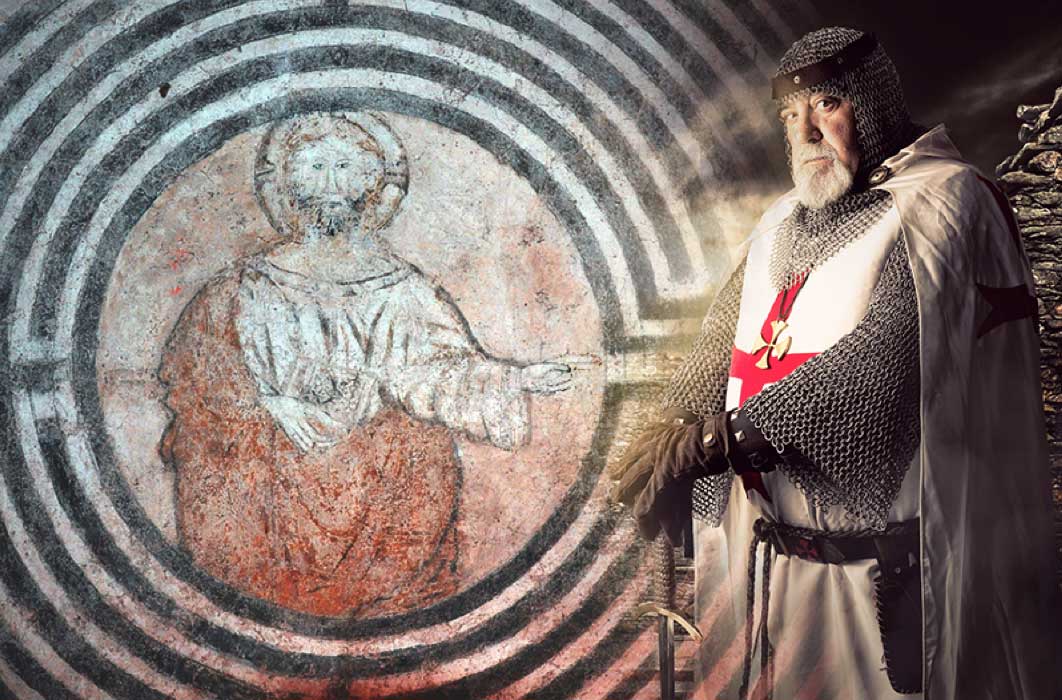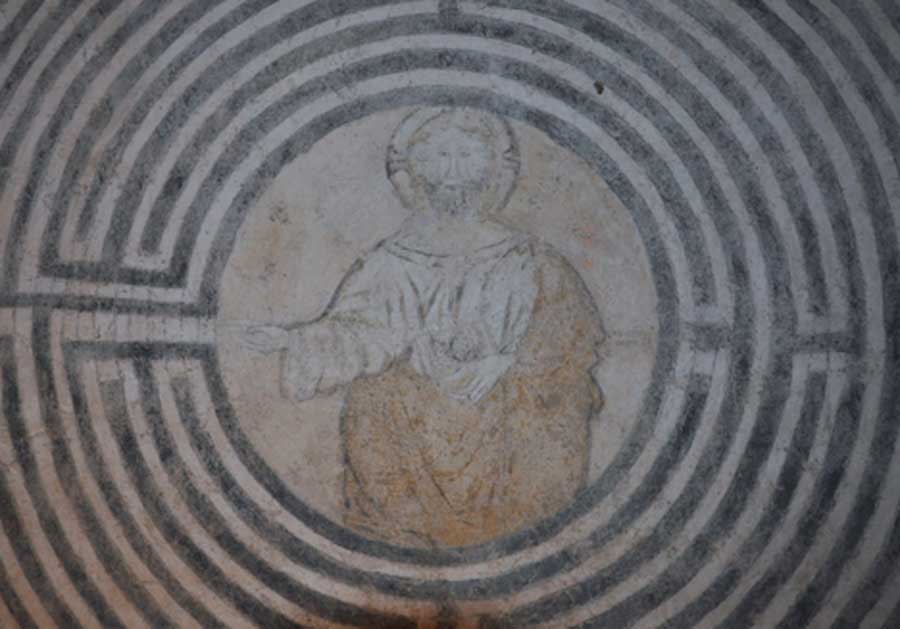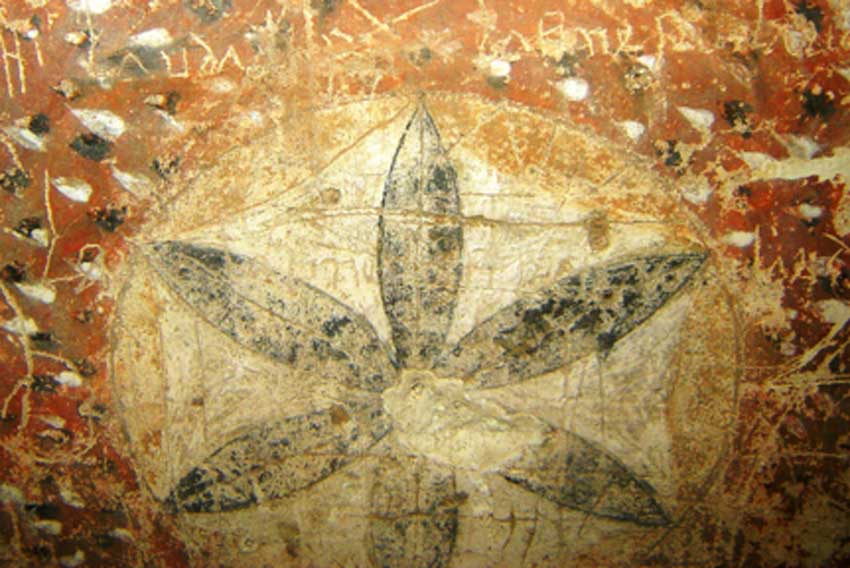
Christ in the Labyrinth, Pointing to a Sacred Pilgrimage of the Knights’ Templar
In 1996 during restoration work on a medieval cloister in the ancient city of Alatri, in the southern district of Lazio in Italy, a fresco was discovered with the image of Christ in the centre of an enormous labyrinth. This fresco is unique since nowhere else on earth has another been discovered with Christ in the centre of a labyrinth. It possibly forms part of a medieval pilgrimage designed by the Knights’ Templar, as an initiatory path, through Europe, from Scandinavia to England, from France to Italy. Giancarlo Pavat, historical researcher for a Museum of Rome and Italy’s expert on labyrinths deciphers the mysterious symbolism and reveals the sacred path of the Knights’ Templar leading from churches to cathedrals and basilica’s all over Europe.

Image of Christ in the Labyrinth at Alatri, after restoration. (Image: © Giancarlo Pavat).
Ancient Acropolis of Alatri
The city of Alatri’s origins are ancient and shrouded in mystery. It's famous for its threefold walls and especially for the acropolis, with walls 15 metres (49 feet) high, polygonal in form, composed of huge boulders. The acropolis has two megalithic gates. The Porta Maggiore (main entrance) and Porta Minore (lesser entrance) or Porta dei Phalli. The Porta Maggiore opens on the southern side of the acropolis and is 4.5 metres (14.76 feet) high and 2.68 metres (8.79 feet) wide. It was constructed by an overlap of eight huge blocks of limestone, topped by a megalithic architrave of about 5 metres (16.40 feet) long with an estimated weight of at least 27 tons. Even the Porta Minore is incredible. Its monolithic architrave carved with three apotropaic phallic symbols (mostly erased in the Middle Ages) which give it its name, is 3,5 metres (11.48 feet) long. The builders of these megalithic walls are unknown and even the date is uncertain. Some archaeologists date them between the sixth and fourth centuries BC, others estimate they are even older, at least 1000 BC.

Alatri, inside of Porta Maggiore (Acropolis) by Edward Lear (1841) (Public Domain)
Alatri also boasts Roman and medieval monuments, like the many beautiful churches and palaces of the sixth, seventh and eighth centuries. A church with an adjoining cloister, dating from the 13th century, is dedicated to St. Francis of Assisi. The cloister opens onto ‘Queen Margherita of Savoia square’. Once it was a convent, then a prison and criminal court. Today, having been restored, it is used as an exhibition hall for cultural events.

The six-petal flower of life (Image © Giancarlo Pavat)
The Fresco of Christ
During the restoration work in 1996, a tunnel with frescoes painted on the walls was discovered. Unknown artists have painted six-petalled flowers, also called ‘Flower of Life’, spirals, triple circles, decorative plants and what is considered a true unicum (utterly unique) in the panorama of universal art. This is a huge fresco of ‘Christ in Glory’ or ‘Christ the Judge’ at the centre of a huge labyrinth of 12 concentric black and white circles. The diameter of the outer circle is about 140 cm (55.11 inches) while that of the inner circle measures 75 cm (29.52 inches).





